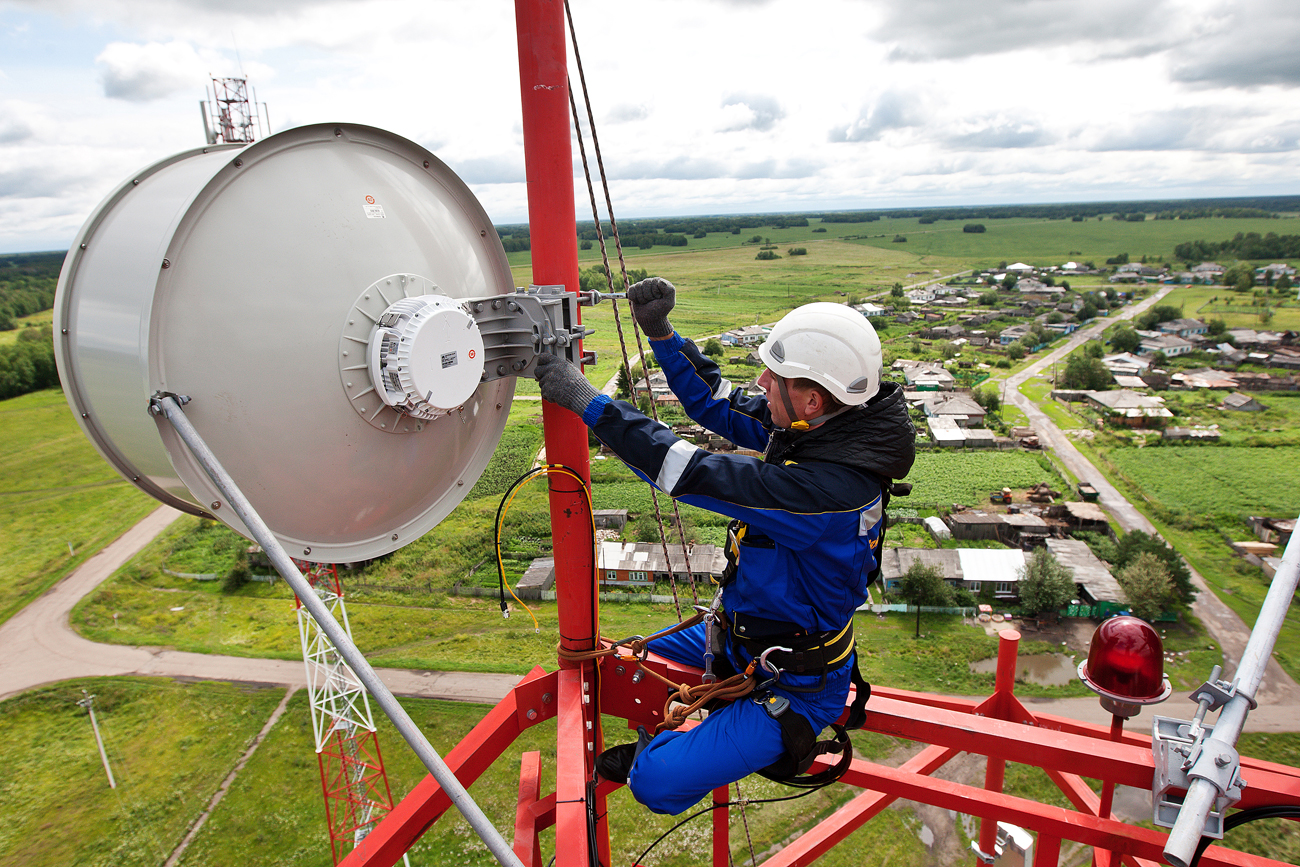
A technician attaches a radio relay antenna for cellular communications on a tower in the village of Babarykino, Russia.
Yakov Andreev/RIA NovostiRussian designers have created an airspace control system that significantly extends Moscow's air and missile defense capabilities.
Developed by a subsidiary of state technology corporation Rostec, the system, named “Rubezh,” can detect flying objects in the electromagnetic fields of cellular towers deployed across the Russian Federation.
The creators assure that GSM networks will help the military detect on radars a number of hard-to-see objects – enemy cruise missiles, drones and small aircraft.
The cellular network forms an electromagnetic field through continuous exchange of signals between cellular towers, transmitters and repeaters.
When metal objects get into this area, the stations' receivers instantly register a change in the field and – thanks to Rubezh – will be able to transmit the coordinates of the object to the "base.”
Rubezh will be able to determine the class of the object (be it a missile, aircraft, helicopter, etc.), allowing commanders at command and control centers for the Aerospace Forces' air defense systems to make a decision on how to act.
There are more than 250,000 cellular towers in Russia, and this number grows every year. According to the developers, this will permit the creation of an interference-free field, which will operate 24 hours a day at different frequencies, and transmit data automatically to anti-aircraft units.
Rubezh is installed not at a GSM station, but directly at air defense systems' control posts, and it will run at no financial cost to mobile operators.
According to Leonid Konik, chief editor of the Comnews website, the project is very risky for several reasons.
Firstly, a GSM station's radius of action varies only from 3 to 30 km (1.9-19 miles) depending on its range and the density of buildings around.
Secondly, mobile operators, regardless of anyone, orient their stations according to broadcast sectors, and the flight of a missile or enemy aircraft will not necessarily take place within the scope of a tower.
But the chief problem is that mobile network equipment is entirely made abroad. Therefore, according to Konik (in Russian), even theoretical discussion of its use for the defense of the country is pretty futile.
All rights reserved by Rossiyskaya Gazeta.
Subscribe
to our newsletter!
Get the week's best stories straight to your inbox